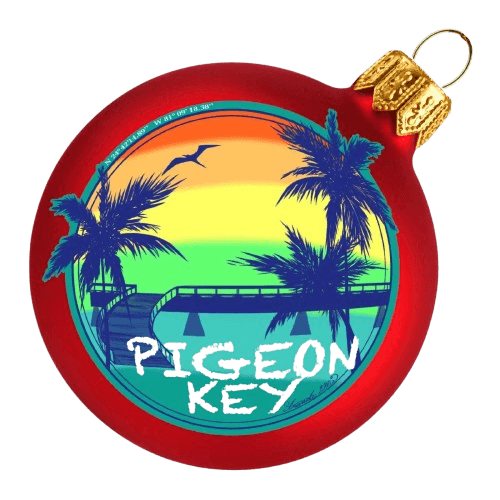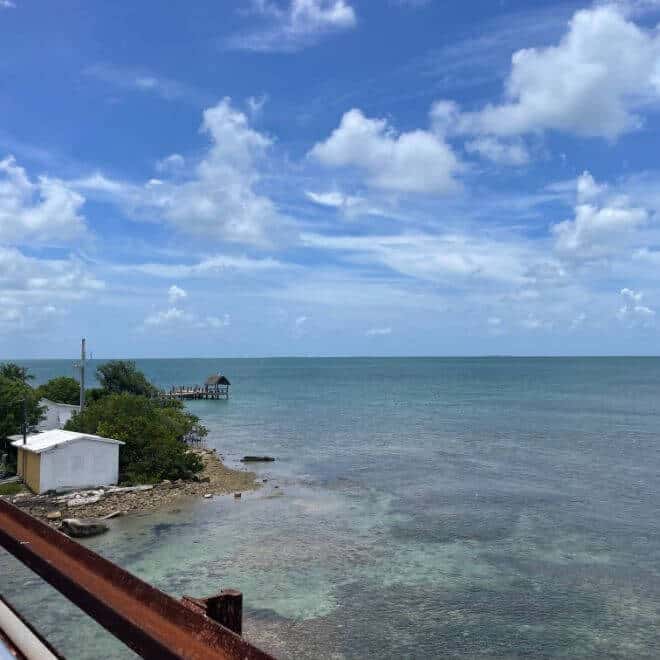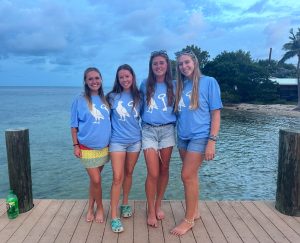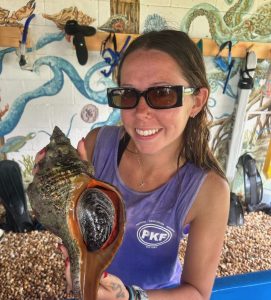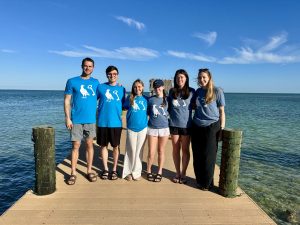Seagrasses are the only true flowering plant that can live completely submerged in salt water. Despite the name “grasses,” they are not related to grass in any way except for appearance, and are actually more closely related to lilies. As flowering plants, they need light to make food and survive, so they are often found at shallow depths to ensure they get enough light. There are over 55 species of seagrasses, but around Pigeon Key, you can find three types: turtle grass, manatee grass, and shoal grass.
Turtle grass is the most common of the seagrasses seen in the Florida Keys. Most of the seagrass beds here are made of this grass as it is a dominant species and will push out its competition.Turtle grass has wide, flat blades that can resemble a turtle flipper. This physical similarity and the fact that Green Sea Turtles are known to love eating this grass is where it gets its name from.
Manatee grass is often seen mixed in with the turtle grass in the beds or washed up on shore in large clumps. Also named after an animal, this grass has round, thin blades like manatee whiskers or straw. It can also live at slightly deeper depths than turtle grass can, which helps it survive the dominant turtle grass trying to push it out of the ecosystem.
The third most common seagrass found around Pigeon Key is shoal grass. Shoal grass was not named for an animal, but for the shallow water it is found in. This grass has blades that are narrow and flat and are often found in small patches closer to shore. Shoal grass was the pioneer species of the area, meaning it established in the Florida Keys first, but has since been pushed out by turtle grass. However, shoal grass is able to survive at shallower depths than turtle grass, which is why we still find patches of it around Pigeon Key!
Seagrass beds are wonderful places to see a large variety of creatures. A lot of smaller invertebrates and fish use them as shelter and protection from predators, especially when they are young. While tide-pooling, you may be able to find juvenile fish and crustaceans living and hiding in these nursery grounds. The horse conch (Florida’s state shell) also can be seen in the seagrass beds, blending in and hiding in the grasses. Bigger fish such as stingrays also frequent the beds.
All of these creatures and more can be seen from around Pigeon Key. While walking on the Old 7-Mile Bridge and the ramp leading down to the island, make sure you look over the edge to get a bird’s eye view of these beds. Snorkeling on Pigeon Key is also a great way to see marine life up close and personal! Whichever way you choose to enjoy the seagrass beds, make sure you keep a look out for the diverse animals among the different types of grasses here during your next visit to Pigeon Key!
